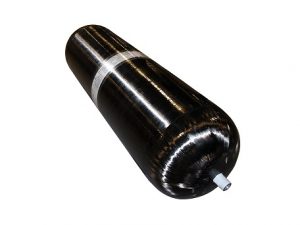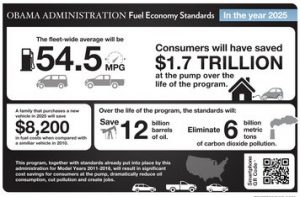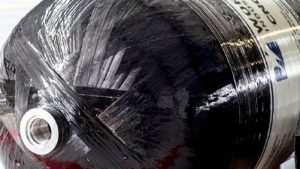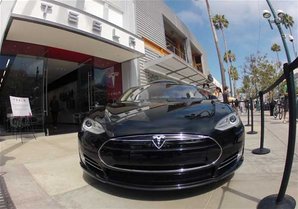by Jon LeSage, editor and publisher, Green Auto Market
Here’s my take on the 10 most significant and interesting occurrences during the past week…….
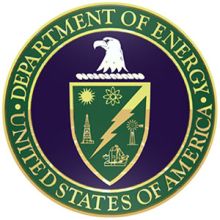 DOE offering $58M in funding: U.S. Department of Energy Secretary Ernest Moniz appeared at the Washington Auto Show to announce an additional $58 million in funding for vehicle technology advancements and released a report highlighting the successes of DOE’s Advanced Technology Vehicles Manufacturing (ATVM) loan program. Moniz announced a $55 million funding opportunity that will solicit projects across vehicle technologies like energy storage, electric drive systems, materials, fuels and lubricants, and advanced combustion. Moniz also said that two projects at CALSTART and the National Association of Regional Councils will receive $3 million to develop systems that help companies combine their purchasing of advanced vehicles, components, and infrastructure to reduce incremental cost and achieve economies of scale. The ATVM loan program was acknowledged for investing $8 billion in supporting the production of more than four million fuel-efficient cars and creating more than 35,000 direct jobs across eight states.
DOE offering $58M in funding: U.S. Department of Energy Secretary Ernest Moniz appeared at the Washington Auto Show to announce an additional $58 million in funding for vehicle technology advancements and released a report highlighting the successes of DOE’s Advanced Technology Vehicles Manufacturing (ATVM) loan program. Moniz announced a $55 million funding opportunity that will solicit projects across vehicle technologies like energy storage, electric drive systems, materials, fuels and lubricants, and advanced combustion. Moniz also said that two projects at CALSTART and the National Association of Regional Councils will receive $3 million to develop systems that help companies combine their purchasing of advanced vehicles, components, and infrastructure to reduce incremental cost and achieve economies of scale. The ATVM loan program was acknowledged for investing $8 billion in supporting the production of more than four million fuel-efficient cars and creating more than 35,000 direct jobs across eight states.- Ethanol debate hot in Republican primaries: Presidential candidate Donald Trump says that the U.S. Environmental Protection Agency should meet ethanol volumes that Congress set in 2007. Trump has been antagonizing one of his leading opponents for the White House, Sen. Ted Cruz (R-Tex.), who has been opposed to the federal biofuels mandate. Iowa Gov. Terry Branstad (R) had previously told voters that they shouldn’t vote for Cruz because of his opposition to ethanol.
- President Barack Obama visited the Detroit Auto Show to champion his administration’s support for General Motors and Chrysler following their bankruptcies. Obama also reminded the public about his support for plug-in electric vehicles during his visit to the newly launched 2017 Chevrolet Bolt. Obama sat in the electric car during a wave of flashbulbs that reminded media about his 2010 visit to GM’s Detroit-Hamtramck Assembly Plant, when he sat in the soon-to-be-launched 2011 Chevrolet Volt plug-in hybrid.
- Apple’s EV chief leaving: Apple Inc.’s Steve Zadesky, who has been overseeing the company’s electric car project for the last two years, has said he is leaving the company. Zadesky and Apple declined to comment. Apple won’t comment on its electric or autonomous vehicle R&D projects, but most insiders say Apple is taking it very seriously. Apple CEO Tim Cook went to BMW’s headquarters in 2014, and senior Apple executives toured the German automaker’s Leipzig factory to learn how it manufactures the i3 electric car. In other news, Daimler CEO Dieter Zetsche said that a recent trip to Silicon Valley revealed that Apple and Google have made more progress on automotive projects than he had assumed, especially in self-driving cars. Daimler’s luxury brand Mercedes-Benz has followed Google’s lead by developing an S-class sedan which drove about 64 miles without needing any driver input.
- Honda releases details on Clarity fuel-cell vehicle: American Honda has announced that the retail price for its upcoming Clarity fuel-cell car will be about $60,000, and that a lease will be offered for under $500 per month. That will start up later this year in select California markets. The Clarity was unveiled at the Tokyo Auto Show last year before being introduced to the U.S. market in November at the LA Auto Show. The company says that it will be shipped to a limited number of dealers in L.A., Orange County, the Bay Area, and Sacramento.
- New electric school bus: Motiv Power Systems and Creative Bus, Inc., announced they will partner on a new all-electric school bus. Called the Starcraft e-Quest XL, the zero-emission school bus will use the Motiv All-Electric Powertrain, a Ford F59 chassis and Starcraft body. Features of the e-Quest XL bus include passenger capacity of up to 48, a range of up to 85 miles, 50% charge within 2 hours, among others. “Developing more options for all-electric school buses offers more opportunities for school districts to reduce harmful pollutants near children who are especially vulnerable to health impacts from diesel emissions,” said Motiv founder and CEO Jim Castelaz.
- Uber more popular now with travelers: Ridesharing giant Uber is becoming a popular option with business travelers. Expense management system provider Certify found that Uber made up 41% of all ground transportation receipts among Certify clients, while car rentals constituted 39%, and the remaining 20% went to taxis. At the start of 2015, Uber had made up 29% of all ground transportation trips. In other news, Uber recently scored a victory in London. Regulatory agency Transport for London agreed to drop proposals to place restrictions on Uber serving that market. That decision followed a public consultation on a range of proposals, some of which might have imposed hardships on Uber, including a five-minute minimum wait time between booking a car and starting a journey.
- Amazon may be in legal battle over on-demand delivery: Amazon may be facing labor law challenges similar to what and other transportation services providing on-demand services with independent contractors. Amazon has been expanding use of independent contractors nationwide to meet a promise to deliver its Prime Now orders within two hours of the order being placed. So far, going this route has been more than worth it for Amazon as it contends with Google, Wal-Mart, and other retail competitors to meet the fast growing market of customers seeking nearly instant gratification for having their orders delivered instantly.
- Top 6 EV sales countries: China made up 34.2% of global plug-in electric vehicle sales last year with 176,627 sold and finished in first place. The U.S. was No. 2 with 115,262 EVs sold in 2015, making up was 22.3% of the total. The Netherlands came in at No. 3 with 43,971 units sold last year. Norway finished the year in 4th place, with 34,455 plug-ins sold. The United Kingdom came finished in 5th place with 28,188 EV sales last year. France finished in 6th place, with 27,701 units sold last year.
- More green car award winners announced: Green Car Journal has announced the winners of its prestigious 2016 Green Car Awards at a press conference held today during the Washington Auto Show’s Public Policy Day in Washington DC. Distinguished as 2016 Luxury Green Car of the Year™ is Volvo’s new XC90 T8. The Chevrolet Malibu Hybrid tops the field as 2016 Connected Green Car of the Year™ and Honda’s HR-V earns Green Car Journal’s 2016 Green SUV of the Year. “Rising to the top as award winners means these three exceptional vehicles set a benchmark in the auto industry’s effort to create vehicles that are desirable and efficient, while also achieving environmental milestones so important for our driving future,” said Ron Cogan, editor and publisher of Green Car Journal and CarsOfChange.com.

